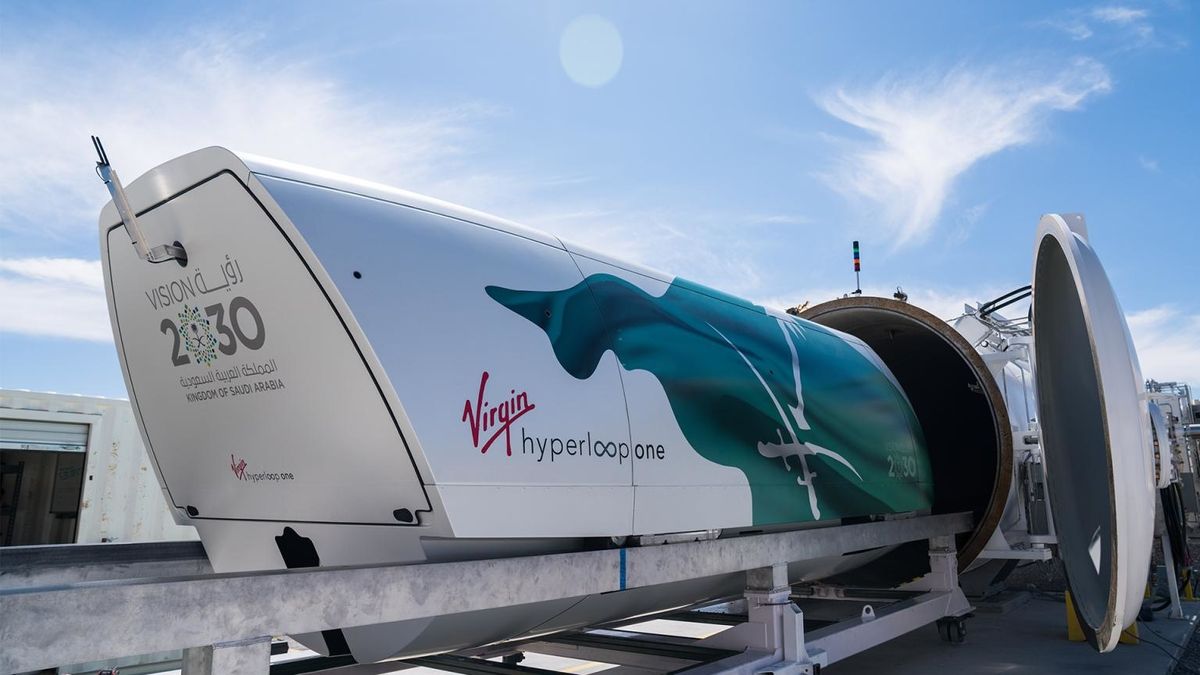Below is an article originally written by PowerToFly Partner Hyperloop One, and published on September 18, 2019. Go to Hyperloop One's page on PowerToFly to see their open positions and learn more.
MUMBAI, INDIA (SEPTEMBER 18, 2019) – As India moves to create the first hyperloop project in the world, Virgin Hyperloop One (VHO) has released new jobs figures for the entire project verified by KPMG, a strategic partner, estimating that it will create over 1.8 million direct and indirect jobs in the region through the creation of a hyperloop route.
The proposed hyperloop directly addresses all key targets of the new Industrial Policy released in April 2019 which intends to make Maharashtra a trillion dollar economy, and the project would directly or indirectly promote 9 out of 14 "thrust sectors" identified by the new policy.
According to estimates by VHO in conjunction with KPMG, the total project will attract an investment of over INR 70,000 Crore over the duration of construction. Over its lifetime, the project will create over $36 billion USD in socio-economic benefits resulting in a 2.6% increase in State GDP, and create new hyperloop component and manufacturing opportunities for Maharashtra to supply projects within India, and export to the rest of the world.
Employment projections for the project take into account the jobs created via construction, operation, manufacturing and research and development over the life of the project. The figures take into account direct jobs (jobs directly related to hyperloop project development activities), and indirect jobs (upstream industry sectors that support the hyperloop project).
"The Pune-Mumbai Hyperloop Project is well on its way to becoming the first of its kind transit option, creating new economic opportunities for hundreds of millions of Maharashtra residents. But that's just the beginning," said Harj Dhaliwal, Managing Director of India and the Middle East for Virgin Hyperloop One. "We envision a future in which Maharashtra becomes a global supply hub to support hyperloop projects around the world with manufacturing, design, and engineering support services –– making it not just hyperloop's first home, but a global leader for the first new mode of mass transportation in over 100 years."
Last month, in a landmark announcement for building the Pune-Mumbai hyperloop transportation system, the Government of Maharashtra deemed hyperloop a public infrastructure project, recognizing hyperloop technology alongside other more traditional forms of mass transit and setting it up to be the first hyperloop project in the world.
The MahaIDEA Committee also earlier approved the Virgin Hyperloop One-DP World (VHO-DPW) Consortium as the Original Project Proponent (OPP) for the Pune-Mumbai Hyperloop Project. There are approximately 75 million passenger journeys between Mumbai and Pune annually – expected to skyrocket to 130 million by 2026. Virgin Hyperloop One's system can meet this growing demand by supporting as many as 200 million passengers annually, linking central Pune and Mumbai in less than 30 minutes, as opposed to the current 3.5+ hours. This ultra-high speed linkage not only opens up new economic and social opportunities but also offers a sustainable form of mass transportation with zero direct emissions.
The Government of Maharashtra is finalizing the hyperloop infrastructure project Request For Proposal (RFP) and is expected to invite bids for the RFP under the MahaIDEA Act for infrastructure projects. The VHO-DPW proposal includes USD $500 million of private equity funding for Phase 1 of the project. Phase 2 will be funded via debt and equity to be mobilized by the private sector ensuring that public money is not re-allocated from other infrastructure projects.
About the Mumbai-Pune Hyperloop Project
The proposed Mumbai-Pune Hyperloop Project would link central Pune and Mumbai in less than 30 minutes, supporting up to 200 million passenger trips annually. Virgin Hyperloop One has proposed a two-phased approach for the project, with the construction of an 11.8 km demonstration track, followed by Phase 2 which would build the rest of the 100 km hyperloop system connecting Pune with Mumbai, with the option to add a stop at the proposed Navi Mumbai International Airport. The Government of Maharashtra has declared the Pune-Mumbai Hyperloop Project as a public infrastructure project, with the Virgin Hyperloop One-DP World Consortium as the Original Project Proponent (OPP).
About Virgin Hyperloop One
Virgin Hyperloop One is the only hyperloop company who has built a full-scale hyperloop test track and has completed hundreds of test runs to date. The company successfully operated a full-scale hyperloop vehicle using electric propulsion and electromagnetic levitation under near-vacuum conditions, realizing a fundamentally new form of transportation that is faster, safer, cheaper, and more sustainable than existing modes. The company is now working with governments, partners, and investors around the world to make hyperloop a reality in years, not decades. They currently have projects underway in India, KSA, the U.S. and the UAE. Learn more about Virgin Hyperloop One's technology, vision, and ongoing projects here.
Media Assets
Virgin Hyperloop One media assets can be found here.
Media Contacts
Amrit Singh Deo
FTI Consulting
Managing Director - Strategic Communications
amrit.singhdeo@fticonsulting.com
+91 9167 428 242
Ryan Kelly
Virgin Hyperloop One
Head of Marketing and Communications
press@hyperloop-one.com
+1-610-442-1896



